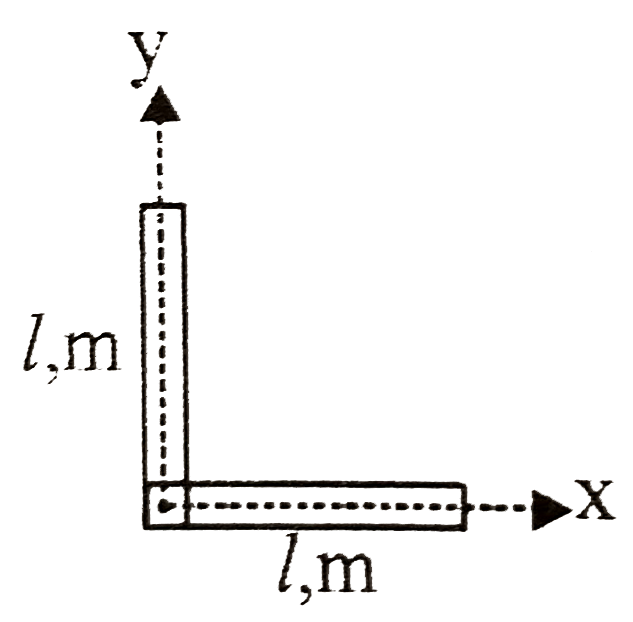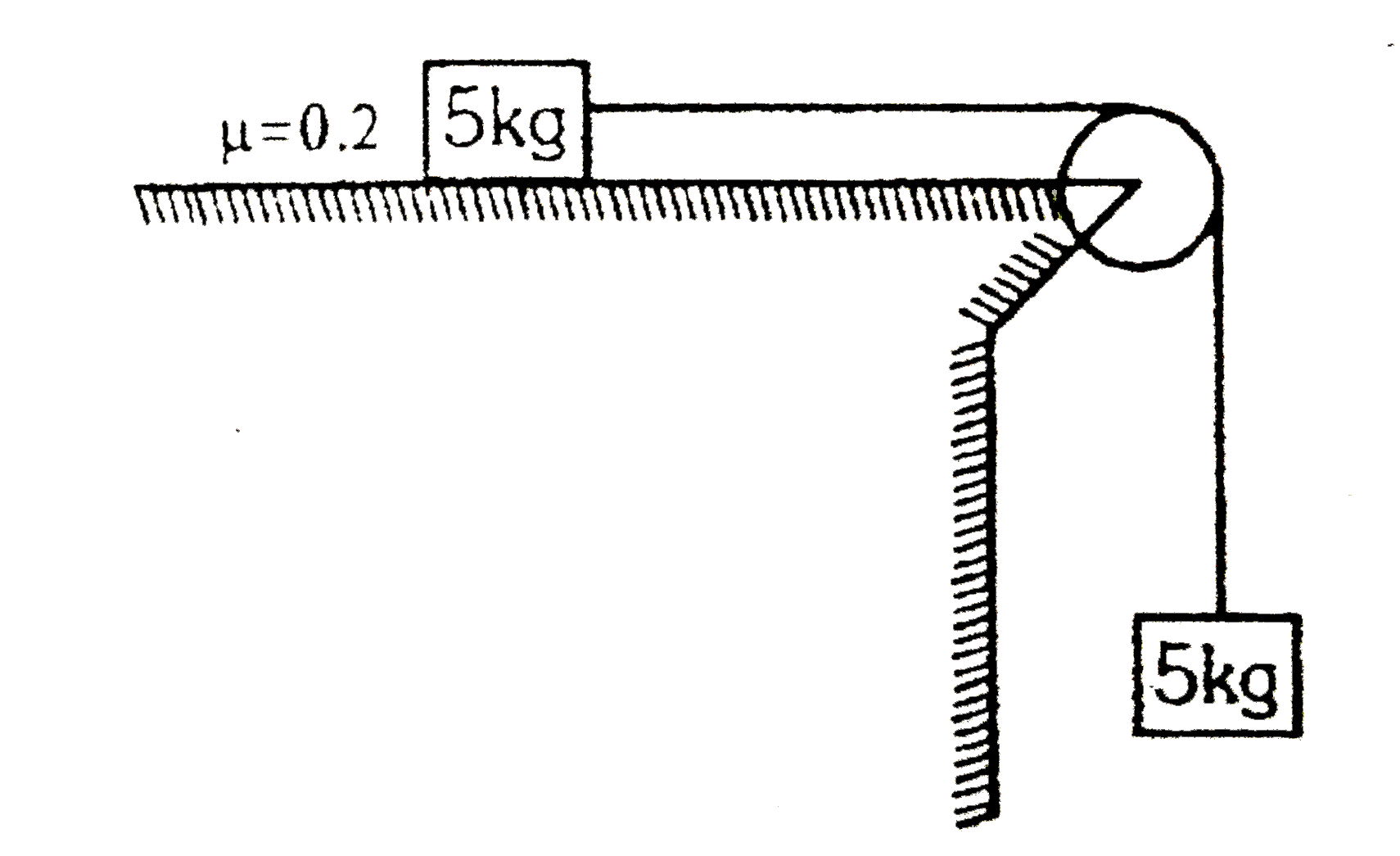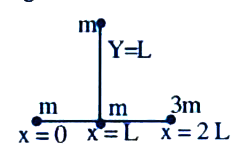Consider the following two statements:
A. Kinear momentum of the system remains constant.
B. Centre of mass of the system remains at rest
A implies B and B implies A
A does not imply B and B does not imply A.
A implies B but B does not imply A.
B implies A but A does not imply B.
The correct Answer is:D
To solve the problem, we need to analyze the two statements regarding linear momentum and the center of mass of a system.
1. Understanding Linear Momentum:
- Linear momentum (p) of a system is defined as the product of its mass (m) and its velocity (v): p=mv.
- For the momentum to remain constant, either the mass must remain constant and the velocity must be constant, or the system must be isolated (no external forces acting on it).
2. Understanding Center of Mass:
- The center of mass (CM) of a system is the point where the total mass of the system can be considered to be concentrated.
- The center of mass remains at rest if its velocity is zero. This means that the system is either at rest or the net external force acting on the system is zero.
3. Analyzing Statement A:
- Statement A claims that the linear momentum of the system remains constant. This can occur when the system is isolated from external forces or if the system's velocity is constant.
4. Analyzing Statement B:
- Statement B claims that the center of mass of the system remains at rest. This implies that the velocity of the center of mass is zero.
5. Implications of the Statements:
- If the center of mass remains at rest (Statement B), it means that the total linear momentum of the system must also be constant (since p=mv and v=0).
- However, if the linear momentum is constant (Statement A), the center of mass could still be moving with a constant velocity (not necessarily at rest). Thus, Statement A does not imply Statement B.
6. Conclusion:
- From the analysis, we conclude that Statement B implies Statement A, but Statement A does not imply Statement B. Therefore, the correct option is:
- Option 4: B implies A, but A does not imply B.
- Linear momentum (p) of a system is defined as the product of its mass (m) and its velocity (v): p=mv.
- For the momentum to remain constant, either the mass must remain constant and the velocity must be constant, or the system must be isolated (no external forces acting on it).
- The center of mass (CM) of a system is the point where the total mass of the system can be considered to be concentrated.
- The center of mass remains at rest if its velocity is zero. This means that the system is either at rest or the net external force acting on the system is zero.
- Statement A claims that the linear momentum of the system remains constant. This can occur when the system is isolated from external forces or if the system's velocity is constant.
- Statement B claims that the center of mass of the system remains at rest. This implies that the velocity of the center of mass is zero.
- If the center of mass remains at rest (Statement B), it means that the total linear momentum of the system must also be constant (since p=mv and v=0).
- However, if the linear momentum is constant (Statement A), the center of mass could still be moving with a constant velocity (not necessarily at rest). Thus, Statement A does not imply Statement B.
- From the analysis, we conclude that Statement B implies Statement A, but Statement A does not imply Statement B. Therefore, the correct option is:
- Option 4: B implies A, but A does not imply B.
Topper's Solved these Questions
- CENTRE OF MASS, LINEAR MOMENTUM, COLLISIONBOOK - HC VERMA ENGLISHCHAPTER - CENTRE OF MASS, LINEAR MOMENTUM, COLLISIONEXERCISE - Exercises
64 Videos
- CENTRE OF MASS, LINEAR MOMENTUM, COLLISIONBOOK - HC VERMA ENGLISHCHAPTER - CENTRE OF MASS, LINEAR MOMENTUM, COLLISIONEXERCISE - Question For short Answer
25 Videos
- CENTRE OF MASS, LINEAR MOMENTUM, COLLISIONBOOK - HC VERMA ENGLISHCHAPTER - CENTRE OF MASS, LINEAR MOMENTUM, COLLISIONEXERCISE - worked out Examples
23 Videos
- CALORIMETRYBOOK - HC VERMA ENGLISHCHAPTER - CALORIMETRYEXERCISE - Short answer
9 Videos
- CIRCULAR MOTIONBOOK - HC VERMA ENGLISHCHAPTER - CIRCULAR MOTIONEXERCISE - Question for short Answer
10 Videos
Similar Questions
Consider the following two statements:
A. linear momentum of the system remains constant.
B. Centre of mass of the system remains at rest
View SolutionCalculate centre of mass of the system

View SolutionConsider the following two statements:
A. Linear momentum of a system of partcles is zero.
B. Kinetic energ of a system of particles is zero.
View SolutionConsider the following two statements:
A. Linear momentum of a system of particles is zero.
B. Kinetic energy of a system of particles is zero.
View SolutionAccording to the principle of conservation of linear momentum, if the external force acting on the system is zero, the linear momentum of the system will remain conserved. It means if the centre of mass of a system is initially at rest, it will remain, at rest in the absence of external force, that is, the displacement of centre of mass will be zero.
Two blocks of masses 'm'and '2m' are placed as shown in Fig. There is no friction anywhere. A spring of force constant k is attached to the bigger block. Mass 'm' is kept in touch with the spring but not attached to it. 'A' and 'B' are two supports attached to '2m'. Now m is moved towards left so that spring is compressed by distance 'x' and then the system is released from rest.

Find the relative velocity of the blocks after 'm' leaves contact with the spring.
View SolutionThe momentum of a system with respect to centre of mass
View SolutionAccording to the principle of conservation of linear momentum if the external force acting on the system is zero, the linear momentum of the system will remain conserved. It means if the centre of mass of a system is initially at rest, it will remain at rest in the absence of external force, that is, the displacement of centre of mass will be zero.
A plank of mass M is placed on a smooth horizontal surface. light identical springs, each of stiffness K, are rigidly connected to struts at the end of the plank as shown in Fig. When the springs are in their unextended position, the distance between their free ends is 3l. A block of mass m is placed on the plank and pressed against one of the springs so that it is compressed to l. To keep the block at rest it is connected to the strut means of a light string. Initially, the system is at rest, Now the string is burnt.

The maximum kinetic energy of the block m is
View SolutionIf temperature of the system remains constant during the course of change, the change is
View SolutionThe magnitude of acceleration of centre of mass of the system is

View SolutionThe co-ordinates of the centre of mass of the system as shown in figure are

View Solution
